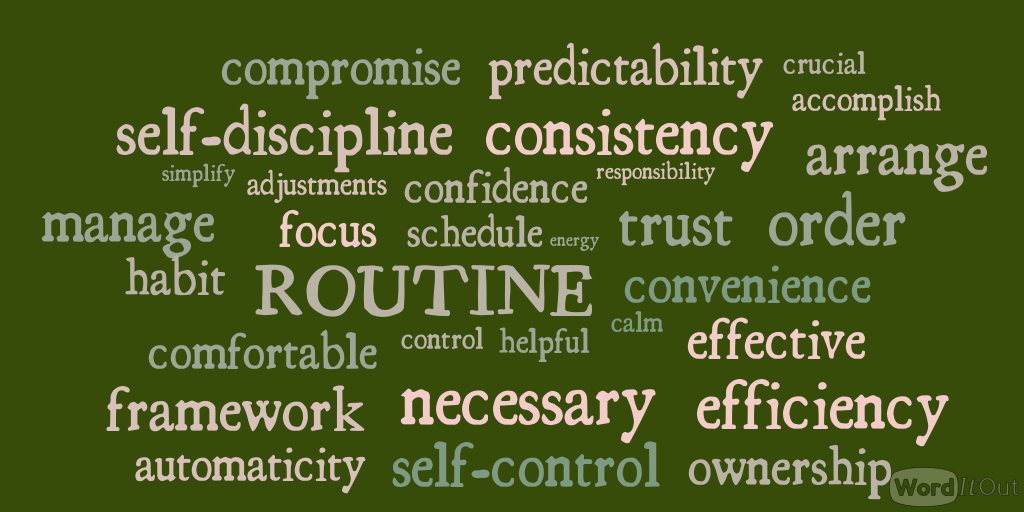By Guest Blogger Donna Siegle
Sure, we’ve all got them, but do we really need them? “Routines are hard to put in place.” “My kids don’t like them.” We’ve heard the resistance to routines, but we’ve also seen huge benefits when they are used consistently. Routines get a bad wrap, like the ‘B’ word… BUDGET. We complain about it, but when used, we can reap big rewards. No one enjoys feeling rushed, out-of-control, and frantic, including our kids. Creating new (or implementing old routines) can be a family affair.
Skills like organization, time management, task initiation, the problem-solution thought process, and activity focus are important to develop early in life. Involving our kids in creating these schedules helps them hone their executive functioning skills.This is a perfect opportunity to model and strengthen these areas. If you have a child who is prone to anxiety or is extremely rigid with time or schedules, it’s sometimes helpful to fold “what if…” scenarios into the conversations. “What if our alarm doesn’t go off?” “What if we realize on the way to school that you forgot your lunch at home?” Create a plan for when things don’t go as scheduled. This can be as simple as a gentle reminder of, “It looks like things are not going as we planned them, but it will be okay.” We often do this in my classroom; it seems to ease anxiety, eliminate confusion, and promote solution-oriented thinking.
The earlier back-to-school routines are implemented, the better, for everyone involved! Plans will look different for each family, and should be catered to your family’s potential problem-areas. The plans may need to be revised a few times before it feels ‘right’ for all members of the team… another opportunity to practice compromise with a solution focused discussion. If you have pre-readers, pictures with stickers or smiley faces are effective and age-appropriate methods of representing the schedule.
(This is a great resource for making and printing free behavior charts.) Older kids can write their own schedule, see if it works from them, and tweak it as needed.
Thinking in terms of going back to school, we need to consider routines for evenings before school, the morning before school, and the afternoon/evening timeframes. Sleep- 9-10 hours is optimal in order for kids to be at their best in school the next day. Simply figure the bedtime routine to end by whatever time your child needs to be asleep in order to attain the 9-10 hours. Then in the morning, figure the time it takes to accomplish their a.m. schedule and get to school and adjust wake-up time accordingly. If you set up your plans early enough, you can do a couple ‘practice run’ days before school starts, maybe even throw in a “what if” scenario. For the after school time — do you want the kids to start on homework immediately? Will they take planned breaks while completing homework? Always keep age-appropriate expectations in mind when planning these routines.
We don’t often associate routines with trust, but they are linked. When our kids know what to expect, they trust that things are being taken care of; that they are being taken care of. Ever walked into a classroom where the students seem to be “bouncing off the walls”? The lack of structure makes us (and especially our kids) feel like they are in a free-fall, and things may or may not be taken care of; they may not be taken care of. Things seem out of control and it is not pleasant. Walking into an environment where the procedures are clearly communicated, are expected for all to follow, and the teacher is in charge has a very different feeling. In which classroom would you want to learn? In which home would you like to live?
_______________________________________________________________
Donna Siegle is an educator of 17 years and Executive Director of S.O.A.R. Tutoring and Advocacy. Her teaching experiences extend from early elementary through high school, special education and regular education, public through alternative schools.
















